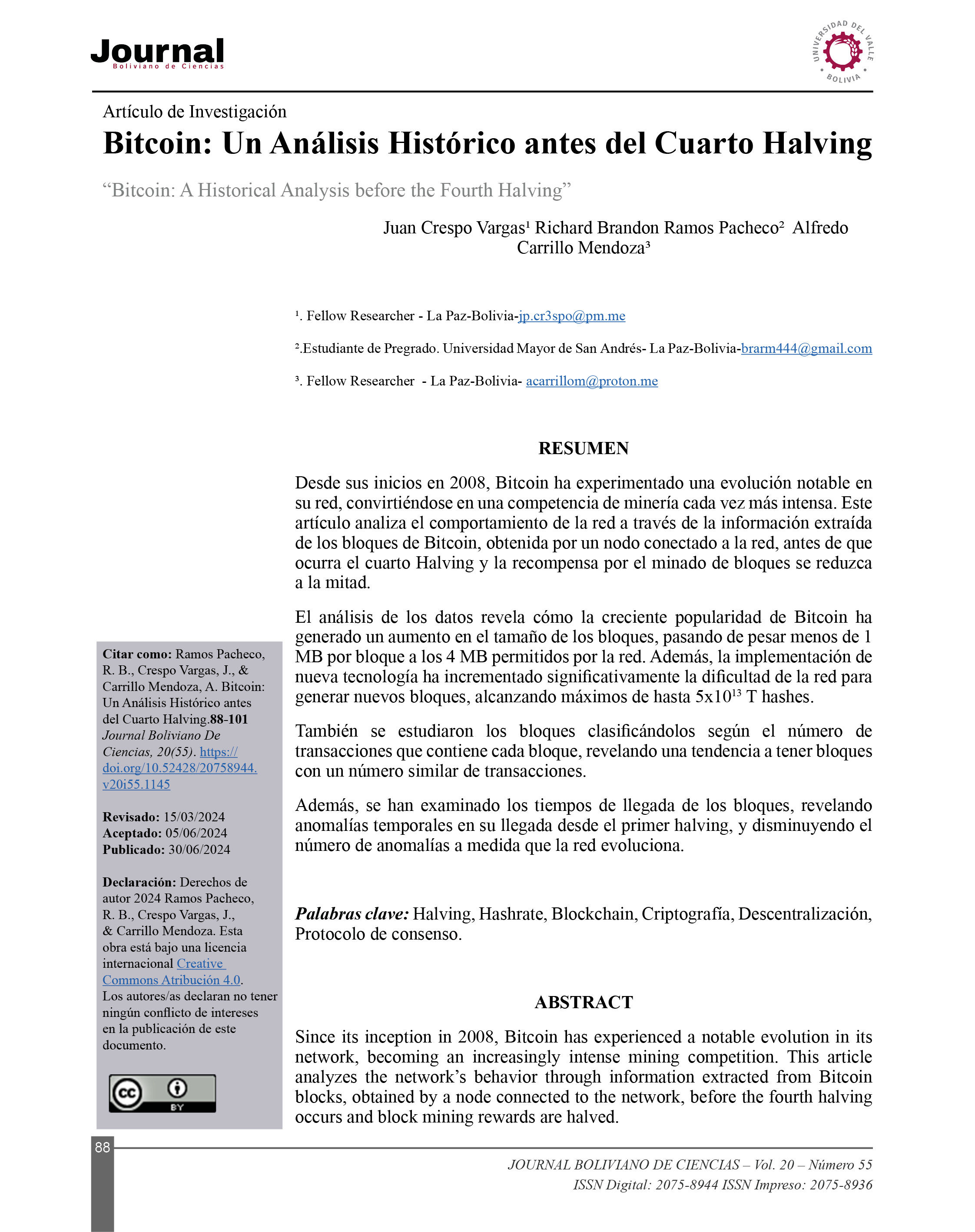Bitcoin: A Historical Analysis before the Fourth Halving
DOI:
https://doi.org/10.52428/20758944.v20i55.1145Keywords:
Halving, Hash rate, Blockchain, Cryptography, Decentralization, Consensus protocol.Abstract
Since its inception in 2008, Bitcoin has experienced a notable evolution in its network, becoming an increasingly intense mining competition. This article analyzes the network's behavior through information extracted from Bitcoin blocks, obtained by a node connected to the network, before the fourth halving occurs and block mining rewards are halved. The data analysis reveals how Bitcoin's growing popularity has led to an increase in block size, from weighing less than 1 MB per block to the 4 MB allowed by the network. Additionally, the implementation of new technology has significantly increased the network's difficulty in generating new blocks, reaching highs of up to $5x10^13$ T hashes. Blocks were also studied by categorizing them according to the number of transactions each block contains, revealing a trend towards blocks with a similar number of transactions. Furthermore, block arrival times were examined, revealing temporal anomalies in their arrival since the first halving, and decreasing the number of anomalies as the network evolves.
Downloads
References
Nakamoto, S. (2008). Bitcoin: A Peer-to-Peer Electronic Cash System. Decentralized Business Review, Oct. 31, 1-6.
Hankerson, D., Vanstone, S., & Menezes, A. (2004). Elliptic Curve Arithmetic in Guide to Elliptic Curve Cryptography. Springer New York, pp. 75-152.
Antonopoulos, A. M., & Harding, D. A. (2023). Mastering Bitcoin. Inc. O'Reilly Media, 3 Nov 15-29,111-134.

Published
How to Cite
Issue
Section
License
Copyright (c) 2024 Richard Brandon Ramos Pacheco, Juan Crespo Vargas, Alfredo Carrillo Mendoza

This work is licensed under a Creative Commons Attribution 4.0 International License.
Authors who publish with this journal agree to the following terms:
- Authors retain copyright and grant the journal right of first publication with the work simultaneously licensed under a Creative Commons Attribution License 4.0 that allows others to share the work with an acknowledgement of the work's authorship and initial publication in this journal.
- Authors are able to enter into separate, additional contractual arrangements for the non-exclusive distribution of the journal's published version of the work (e.g., post it to an institutional repository or publish it in a book), with an acknowledgement of its initial publication in this journal.
- Authors are permitted and encouraged to post their work online (e.g., in institutional repositories or on their website) prior to and during the submission process, as it can lead to productive exchanges, as well as earlier and greater citation of published work.














